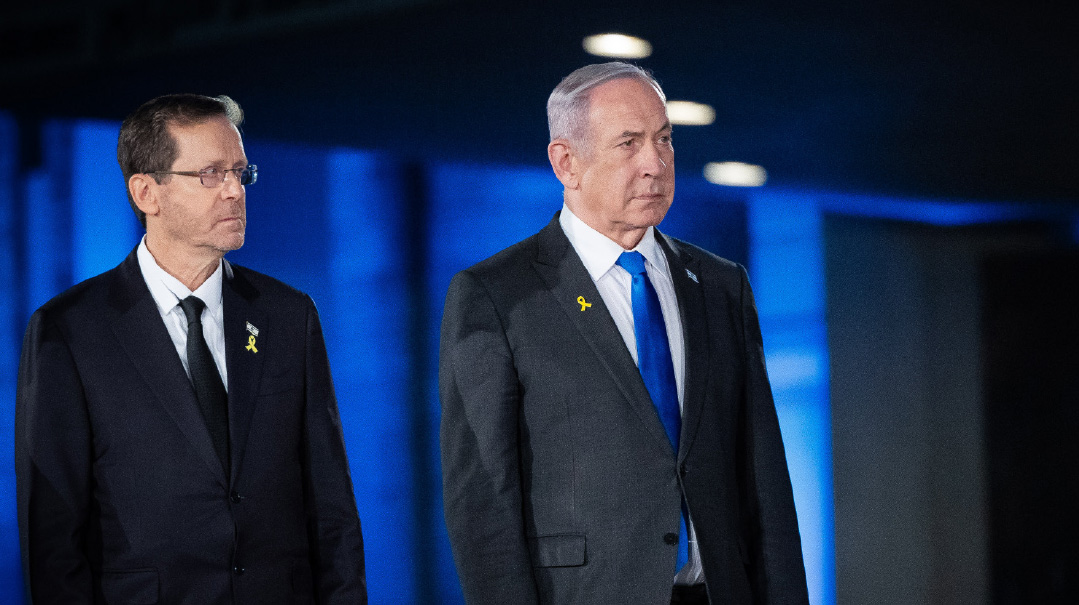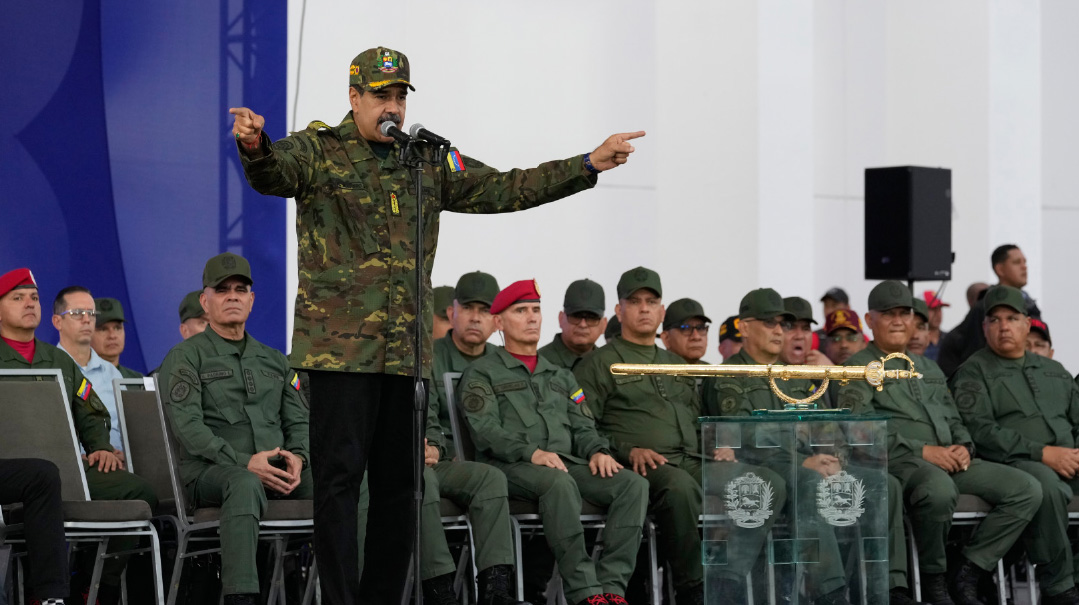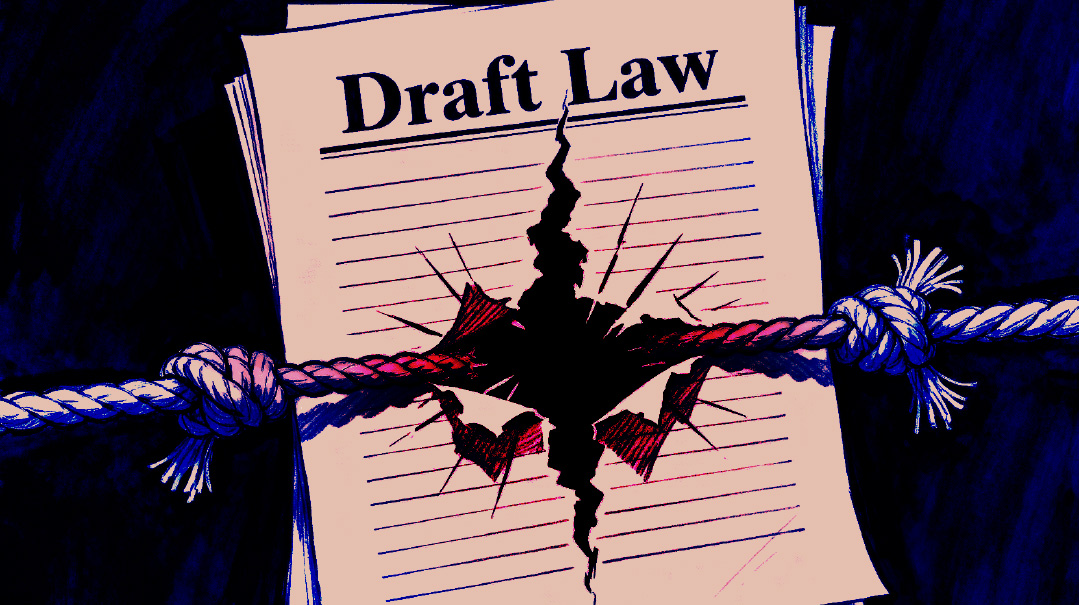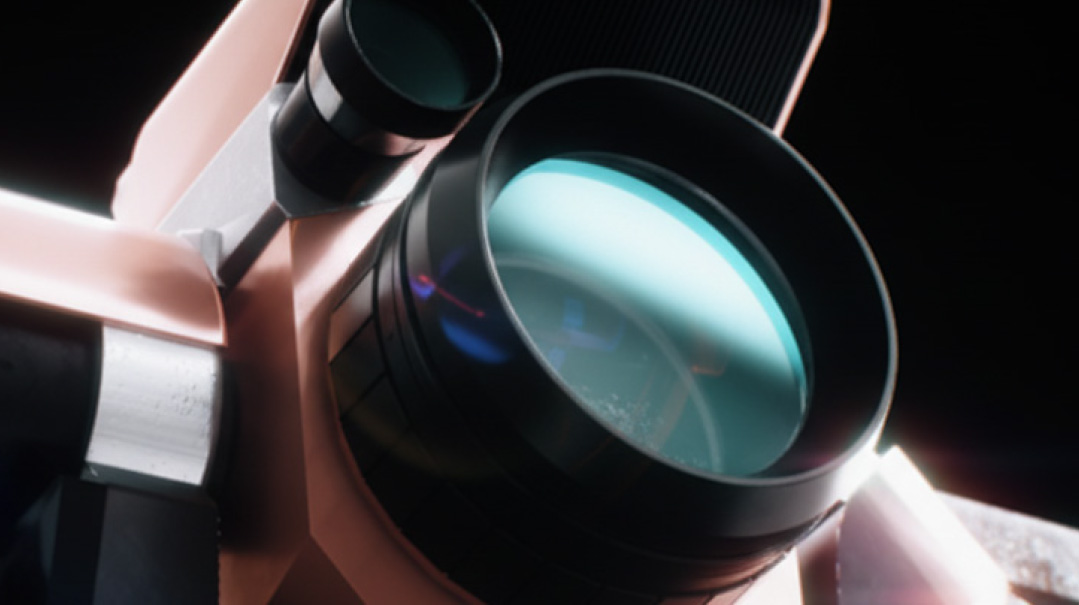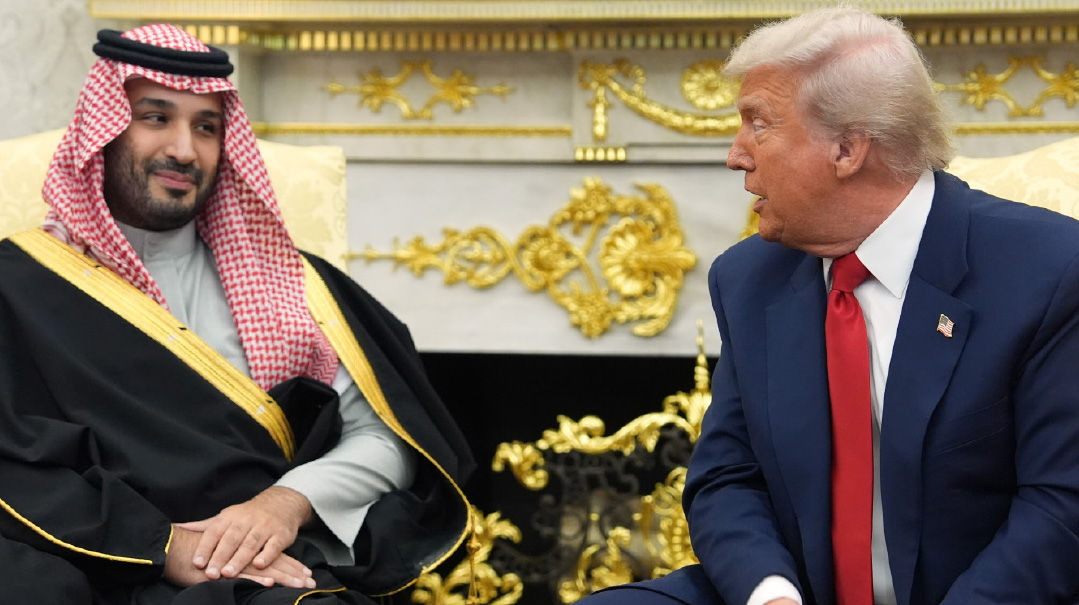In the Hornets’ Nest

On site report from the embattled Shuja’iyya stronghold
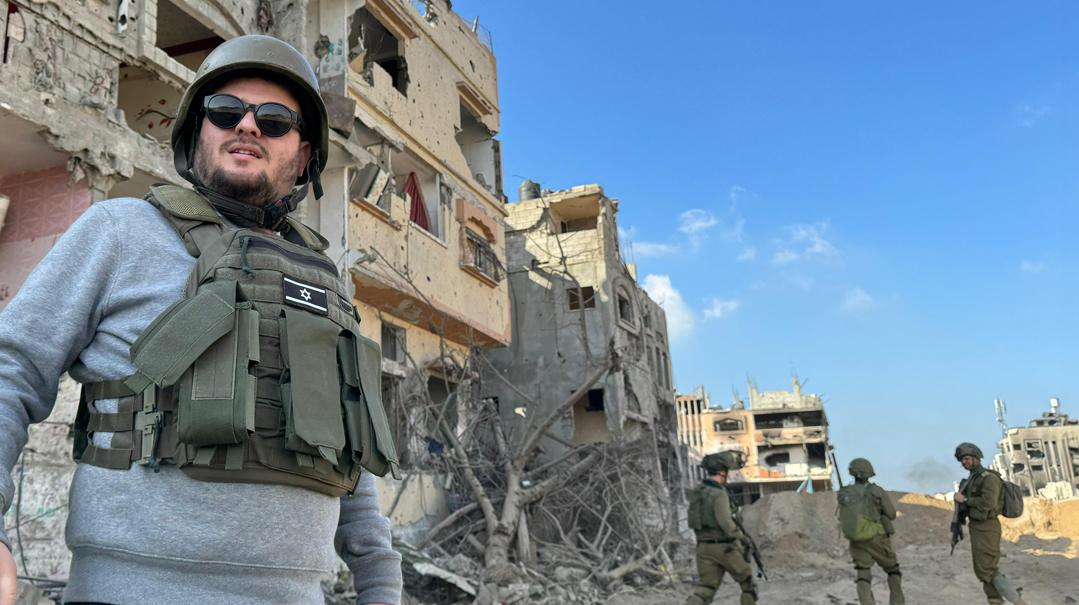
Shuja’iyya, Northern Gaza Strip
While nightly news reports talk of IDF gains and increasing control, Hamas is an insidious enemy that’s not easily subdued. On a tense visit to the Shuja’iyya neighborhood, Mishpacha’s reporter meets the IDF soldiers who remain on constant alert, knowing that despite their gains on the ground, the subterranean tunnels keep disgorging Hamas terrorists with murderous intentions.
With death so terrifyingly close, how do they maintain their resolve?
Seven minutes. That’s how long it took us to get from the IDF staging area in the Gaza Envelope to the front line of the Shuja’iyya terror neighborhood.
Such a paltry distance, such a monstrous gap.
Before I set out, I receive a short briefing. The instructions are simple: If we incur fire from the south, then we are to quickly exit the jeep and lie flat on the ground facing north. If the fire comes from the north, we should lie the opposite way.
I climb over the supplies and sit down behind the driver. Next to me stands a young man; he’s courteous yet alert. Nice to meet you, Lidor Weizmann, Golani fighter. He offers me a dusty pack of Bamba and quickly takes up his firing position. From now until we join the forces awaiting me inside Shuja’iyya, I will see only his legs. His head will be exposed, his gaze focused on the horizon, and his hands firm on his machine gun.
Next to the driver is First Sergeant Barak Yehuda, commander of the IDF’s Patan force, which provides security for the access route to the Gaza Strip. He explains that the acronym of his unit denotes its primary tasks of pinui, tispuk, niyud — evacuation, supplying, and providing mobility.
“Our mission,” he says, “includes evacuating the wounded, providing equipment, and moving fighters. It is our responsibility to safely take out everyone who went in.”
The driver, Ariel Friedler, lives in the Jerusalem neighborhood of Givat Hamivtar. He’s one of 12 brothers; seven are in reserve service, four in Gaza. Along with a grandson who’s serving too.
We wait two minutes for an approval and then start to move. Over the radio, I hear voices reporting clashes in the field. The commander repeats the same word over and over: “sensitivity” — be on the lookout for bombs, tunnel shafts, ambushes.
“Every entry into this area,” the soldiers say, “is fraught with tension. We have cover from all directions, but the enemy can still take us by surprise.”
As we drive, the heavy equipment generates clouds of dust. On the sides of the street, abandoned dogs wander, desperately seeking a scrap of food.
At one point, on a particularly exposed segment, the driver presses down hard on the gas pedal. My stomach clenches, the helmet bangs back, and then we are there, at the gates to Gehinnom.
Nothing, but nothing, prepares me for the face-to-face encounter with the Gaza battlefield. Not the ruins of Nagorno-Karabakh, not the paralyzing fear in the Islamic Quarter in Paris, and not the violent riots in Dresden.
No place I’ve ever visited quite matches the murderous character of the Gaza Strip. Two million residents, hundreds of thousands of houses, thousands more institutional buildings, upper-class neighborhoods, slums, schools, and even hospitals, all calibrated to serve one goal: fundamentalist jihad. In this hornets’ nest, the true sovereign was terror.
Even now, after the IDF has razed much of Shuja’iyya, the threat still crouches just beneath the ground.
Not a Tranquil Place
In this region alone, north of Gaza City, more than 1,000 tunnel shafts were located and some 800 terrorists killed. Yet the terror reign isn’t fully subjugated. Despite the objectively impressive IDF progress, Hamas keeps trying to rear its head, emerging from the belly of the earth to attack our forces yet again.
One hundred thousand people lived here until the morning of Simchas Torah. Right after the Hamas attack, the residents began streaming out. Most of them left during the IDF’s initial air bombardments, before the ground operation began. The last ones left when they saw the IDF tanks. The fighters haven’t found a single civilian in Shuja’iyya, alive or dead. The only Palestinians left here were Hamas cells sheltering in an unfathomable web of underground tunnels crammed with weapons, arms, and bombs.
The destruction is absolute. The homes are mounds of ruins and the streets have been ground to fine gravel.
In the face of such utter destruction, I want to think that human logic would bring the local populace to rise up against those who brought this catastrophe upon them, that at least some of them would raise a hue and cry about the destruction of their homes and futures.
I also want to believe that the hunger, the severe lack of money, the loss of the roofs over their heads, will bring the locals to cooperate with our forces that are now stationed there. But only a few heed the leaflets dropped from Israeli planes offering them a new horizon and a future in exchange for information about our hostages. The rest will hand over to Hamas, in exchange for nothing, Roni Kriboy, an Israeli who was able to escape captivity and tried to make his way back home. The Israeli money interests Gazans. It really does. But Hamas speaks louder.
Shuja’iyya will no longer threaten the residents of the Gaza Envelope. Its front lines have been flattened to form a new security zone. Yet despite that progress, this is not a tranquil place. Hundreds of soldiers patrol the streets. Snipers are deployed on the roofs. Unmanned drones buzz overhead. And the gunfire doesn’t stop for a minute.
During my visit, three terrorists appear in a street nearby. They are swiftly eliminated. But even afterward, the soldiers can’t relax. There are other terrorists, they know, hiding underground, waiting for their chance at jihad.
We Lead From the Front
The Shuja’iyya Brigade was notorious for its tough fighters and hardcore ideology. No small number of our best soldiers fell here, in face-to-face battles with Hamas terrorists.
One of the most senior victims was Lt.-Col. Tomer Greenberg, who fell two weeks ago not far from where I am standing. He was a commander in the Golani brigade, a brave fighter and a special person who saved the infant Berdichevsky twins from their ravaged home in Kibbutz Kfar Azah after their parents were murdered on October 7.
A few days later, another tragedy occurred in this area when three hostages were mistakenly killed by IDF fire. The tremendous tension that the soldiers are under, the knowledge that at any given moment, a terrorist could jump out of a concealed tunnel shaft, led to horrific results.
“Shuja’iyya is a hornets’ nest,” the commander of the Yiftach Brigade, Gen. (res.) Nadav Maisels, tells me.
He meets me on the highest floor of an abandoned, partially demolished building, which currently serves as his command center. In the darkened apartment, the fighters are preparing for an upcoming raid. In an inner room, which has become tactical headquarters, the brigade commander and senior officers are bent over electronic maps.
“This is the second region that we are overtaking since the beginning of the ground operation,” Maisels says. “Our soldiers did impressive work. Hundreds of terrorists were eliminated, hundreds of tunnel shafts destroyed — but still, the enemy can appear from unexpected places.”
Two weeks ago, his predecessor in this position, Lt.-Col. Yitzchak Ben Bassat, fell here in battle. Last September, Ben Bassat completed his services as the commander of the Yiftach Brigade, and Maisels was appointed in his place. When the war broke out, Ben Bassat was drafted to the reserves and placed as the commander of the tactical headquarters of the Golani Brigade. During a heroic battle, while rescuing soldiers that fell into terrorist ambushes, he fell along with Lt.-Col. Tomer Greenberg. Hashem yikom damam.
Maisels is all too familiar with this area of Gaza. He fought here with distinction during Operation Protective Edge. His long years of experience may have toughened him, but the pain is still there. You never get used to losing your comrades, he says.
“Ben Bassat was a much-admired commander, and very beloved by us all,” he says. “In his memory, we are determined to complete our mission here. We know what is at stake and why we are here. Our mission is to fight to the finish and be worthy successors of those who have fallen.”
But the work is extremely risky, mainly due to the Hamas tunnels that form, for all intents and purposes, a second Shuja’iyya beneath the flattened one surrounding us. “Right now,” he said, “there is no guarantee that there are no more tunnels or shafts. Our forces are doing the maximum to locate additional infrastructure underground.”
In contrast to Hamas, I note, the IDF’s commanders march at the head. Commanders of brigades and divisions paid with their lives because they led their forces and were exposed to fire first.
“I don’t think that surprises anyone,” Maisels says. “For us Israelis, the commanders always lead the force. In contrast, the enemy’s leaders stay hidden in safe spots and dispatch lower-level fighters to be killed in the battlefield.”
I ask him about recent claims that the army has drastically reduced its aerial bombardments, due to American pressure.
“I don’t know what they’re saying in the media,” he answers, “but you’re here in Gaza — and you hear a drone buzzing right overhead. The minute we need it, it will operate. Wherever I need to send fighters, I send fighters, and wherever aerial cover is needed, I get the help I need.”
We Know What’s at Stake
Lower down, on Baghdad Street, which not long ago served as a major traffic artery, is the tactical headquarters, where I meet Lt.-Col. Ido Horowitz, commander of Battalion 429 in the Haportzim Battalion. He’s been in the Gaza region since October 7.
“When we arrived in the Gaza Envelope, we encountered hundreds of terrorists, who we eliminated,” he says. “After three or four days, we were already making incursions deep into the Strip.”
How has he been able to keep up morale for all these long, grueling months?
“We understand the gravity of this mission,” he says simply. “We know what’s at stake.”
Every company in these brigades counts among its troops a building engineer or contractor. The engineers are called to examine houses — to see if any of the rooms are on the verge of collapse. Some of the fighters I meet are reservists. Many are prominent individuals in their civilian lives; some have senior business positions, others are academics. Their views span the entire political spectrum.
Beside us walks battalion commander Major Tiran Buzchish. It’s hard to miss his charisma and tenacity. Maybe as the result of recent briefings, or perhaps just out of a desire to convey a message to the civilians at home, he approaches and makes a personal request. “Write this in your magazine: The hostages are inside Gaza, and we are inside Gaza. We won’t be coming home until our mission is complete.”
How can I refuse?
(Originally featured in Mishpacha, Issue 993)
Oops! We could not locate your form.


